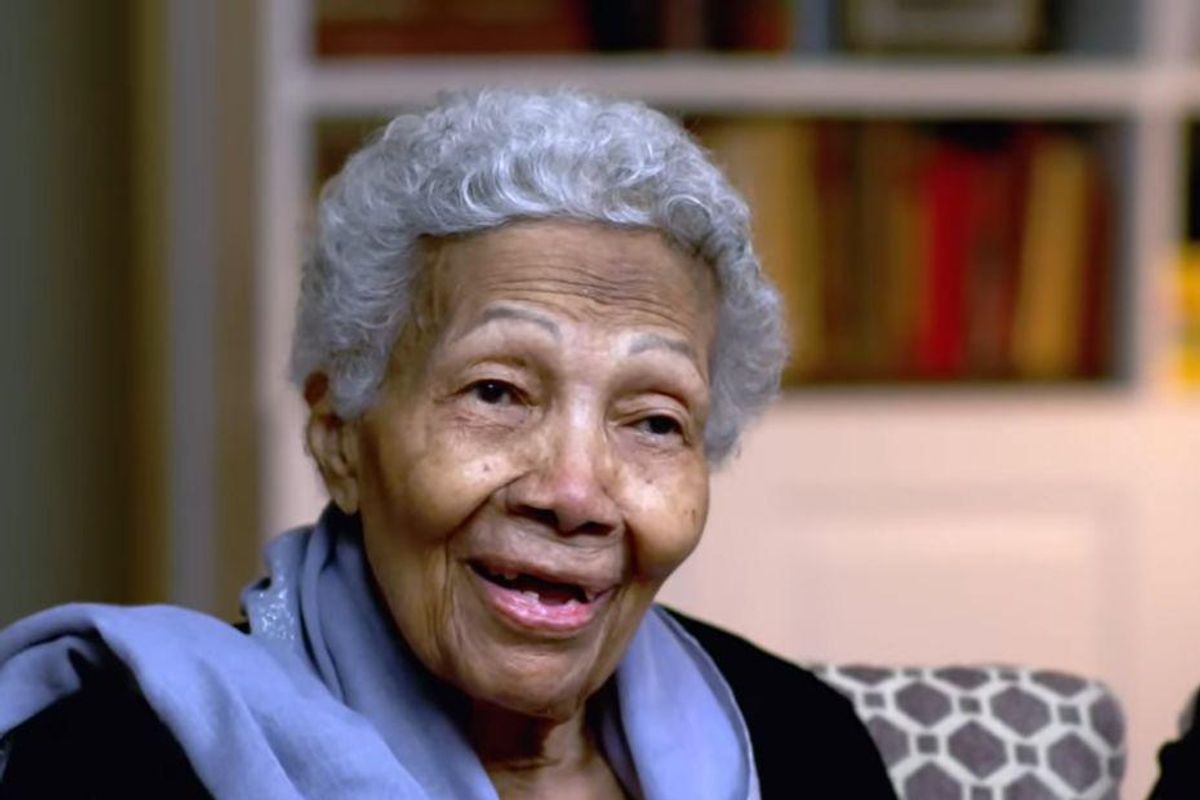102-year-old woman discovers that she's a surviving member of special WWII unit
Crescensia Garcia is getting the recognition she deserves.

A 102-year-old woman's family learned something about her past military service thanks to Twitter.
You never know when you have a legend in your family. Two years ago, a woman named Tara Garcia reached out to "CBS Mornings" correspondent David Begnaud to share a story. Her grandmother, Crescensia Garcia, had just turned 100 and had recently survived COVID-19, only having to briefly use oxygen. Begnaud shared the story of the elder Ms. Garcia with his followers on Twitter, including some pictures Tara had sent him. Little did they know, a bigger story was about to unfold.
Edna Cummings, a retired Army colonel, saw Begnaud's tweet. One of the pictures Tara had sent him was of her grandmother in her military uniform. Cummings told "CBS Mornings" that seeing the photo of Crescensia "was like being in a casino and hitting the jackpot." Why? Turns out Crescensia was part of a very special military unit during World War II.
Cresencia Garcia is 100 today. She beat coronavirus. She's now out of the ICU, (was never intubated) & is no longer requiring oxygen.
— David Begnaud (@DavidBegnaud) April 19, 2020
She served in the woman’s army corp during World War II. She served in England caring for wounded soldiers. What a woman. HBD Mrs. Garcia! pic.twitter.com/2fFDmWH8pl
Cummings needed to know Crescensia's dog tag numbers to confirm her suspicions, so she reached out to Tara. After receiving them, Cummings was able to confirm that Crescensia was part of a burn unit located near Birmingham, England, which treated wounded soldiers due to a shortage of people in the area who could perform those procedures. She may not have thought much of it at the time (it was her military duty after all), but Crescensia Garcia was part of something special.
The SixTripleEight was an 855-member unit that was all Black and all women. Of course, the unit was segregated, but that didn't stop the members from serving their country. Crescensia Garcia, who is now 102 years old, is one of only six surviving members of the unit. And her family had no idea.
"They're the only military women's unit to receive a congressional gold medal," Cummings told "CBS Mornings." "They are part of an elite group of less than 200 recipients. The first being General George Washington." In addition to receiving the congressional gold medal, the family learned that Crescensia's name is on a World War II monument along with other veterans, in Fort Leavenworth, Kansas.
When Tara Garcia found out this information, "I looked at my parents and said, 'I think we just opened Pandora's box here,'" she said. The revelation certainly led to some very cool opportunities, including meeting first lady Dr. Jill Biden.
Both Crescensia and Tara Garcia sat down with David Begnaud on "CBS Mornings" to talk about their family and it was truly the sweetest thing. Although she's beginning to show signs of her age, Crescensia is still pretty sharp and a truly beautiful soul.
Crescensia was born in Puerto Rico in April 1920, before women even had the right to vote. At that time, a loaf of bread was less than 20 cents! She moved to New York City in her youth, and at the age of 24 she enlisted in the Army because the bombing of Pearl Harbor made her so enraged that she felt it was her civic duty to serve and protect. She was immediately put in an all-Black unit for her basic training in Texas.
"They put me in the Black section and there is a White section. That's America to you. See? That's America to you and it's very sad, very sad," she told Begnaud. After the segment, he explained to the news desk that the reason she was able to become a medic was due to her light skin color. She was able to "pass" as white, which earned her privilege.
Social media post helps woman discover her grandmother's World War II past
Much like others who have served in war, Crescensia doesn't seem to think her time in the Army was anything special. She told Begnaud that she was "just" a medic and was only doing her job tending to the injured.
"I am proud to be an American," she said.
After the war, she went back to New York City, settling in the Bronx and getting married and having three children. She became a seamstress, working in Manhattan's Garment District. Now, she is living her best life and sharing her story with the world.
During their interview, Begnaud explained that he had a surprise for both women. He had gotten in touch with the White House and arranged for Dr. Jill Biden to call and FaceTime with them.
"You are one incredible woman and I can't thank you enough for all your service to our country," Dr. Biden said warmly.
"And I salute you. Keep it up. Keep up the good work," Crescensia said, raising her hand to salute the first lady.
At 102, her memory isn't what it used to be, but, according to Tara, her presence of mind during the interview and conversation with the first lady is something neither of them will forget.
"The fact that she knew who that was. Yeah, and she felt that acknowledgment just now. That's all I needed. That's all I needed. I just want her to remember, that's all," Tara said.
We salute Crescensia Garcia and thank her for being who she is.
